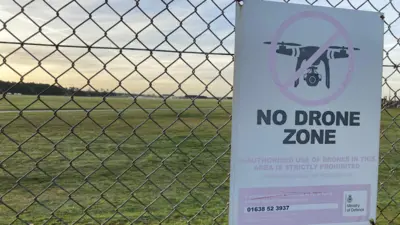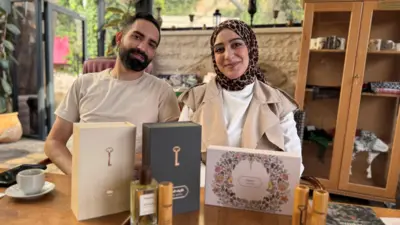We've updated our Privacy and Cookies Policy
We've made some important changes to our Privacy and Cookies Policy and we want you to know what this means for you and your data.
Rare Arabian leopard in need of safe corridors
- Author, Sylvia Smith
- Role, │╔╚╦┐ý╩Í News, Sharjah
Top Stories
As the sun rises in the sky and temperatures soar, Mr Spotty - a four-year-old male Arabian leopard - moves slowly back into the shade of his enclosure.
But he moves forward enthusiastically when his keeper, Jane Budd a South African veterinarian approaches.
"The Arabian leopard is the smallest of all the nine subspecies of leopard," Jane explains.
"Experts estimate that there are fewer than 200 left in the wild. These are further endangered because they live in small groups and each has a tiny population so the risk of extinction due to inbreeding is high."
In order to counter this threat The Arabian Wildlife Centre has been breeding the leopard for a decade.
Top Stories
As the only institution in the United Arab Emirates that is solely devoted to the preservation of wildlife indigenous to the Arabian peninsula, this academic institution and visitor centre has raised awareness among the local population about conserving the region's rich natural biodiversity.
According to Hana Saif Al Suwaidi, chairman of the Environment and Protected Areas Authority in Sharjah, the common picture of a desert as endless rolling sand dunes is wrong.
"We have a variety of terrain," she explains. "From mountainous areas, mangroves, coastal regions and wadis, the Arabian desert is vast and complex, It supports a wide variety of biodiversity."
Top Stories
Although there have been no sightings of the Arabian leopard for 15 years in the United Arab Emirates, the known populations are in neighbouring Oman, Saudi Arabia and Yemen. "The Arabian Wildlife Centre is already collaborating with institutions in each of these three countries," Hana says.
"We exchange information on breeding techniques and we also exchange animals so that each centre has a full complement of indigenous mammals."
A short drive away Paul Verkammen, operations manager of the Arabian Wildlife Centre is putting out feed for the four oryx and seven gazelle that have been recently released into the Dulaimah protected area.
"We also released foxes, hare, reptiles and scorpion," Paul explains." Because of the drought we are having to provide food and water for the animals - otherwise they wouldn't survive."
Dulaimah is the only remaining mature woodland in the whole of Sharjah. Although oryx and gazelle were indigenous in the region, rapid urban expansion has encroached onto the desert - reducing habitats and pushing animals to the edge of extinction.
The push to repopulate and increase numbers lies at the heart of the work of the Arabian Wildlife Centre. And it isn't just the leopard that is benefitting from the research.
The Centre has large numbers of reptiles and insects. "We also have lots of freshwater fish. There is one with suckers under their chins that allow them to climb upwards in search of fresh water," says Hana Saif Al Suwaidi.
"The eggs can remain without water for as long as five years. And then when it rains they hatch. The desert is full of surprises."
Protecting areas of the desert from the encroaching modern world is just one step in a long process when it comes to the iconic Arabian leopard. Although this graceful and shy creature is doing well in the breeding centre, the release of the first animals bred in captivity back into the wild is surrounded with difficulties.
A wild male leopard in Arabia needs a hundred square kilometres to survive," says Paul Verkammen, "a female up to sixty square kilometres. In Sharjah 100 square kilometres is most of the territory of the Emirate."
According to Paul the next step is to achieve closer collaboration with neighbouring countries. "Our best option is to create safe corridors between mountainous areas," he explains.
"We see our first reserves as a kind of stepping stone so that we can create a whole chain of larger areas that the animals can move around in."
Although the team are cautiously optimistic about putting the necessary logistics in place, the biggest challenge will be protecting the leopard against their main predator - man. A problem that only wide-spread education can resolve.
Top Stories
More to explore
Most read
Content is not available








